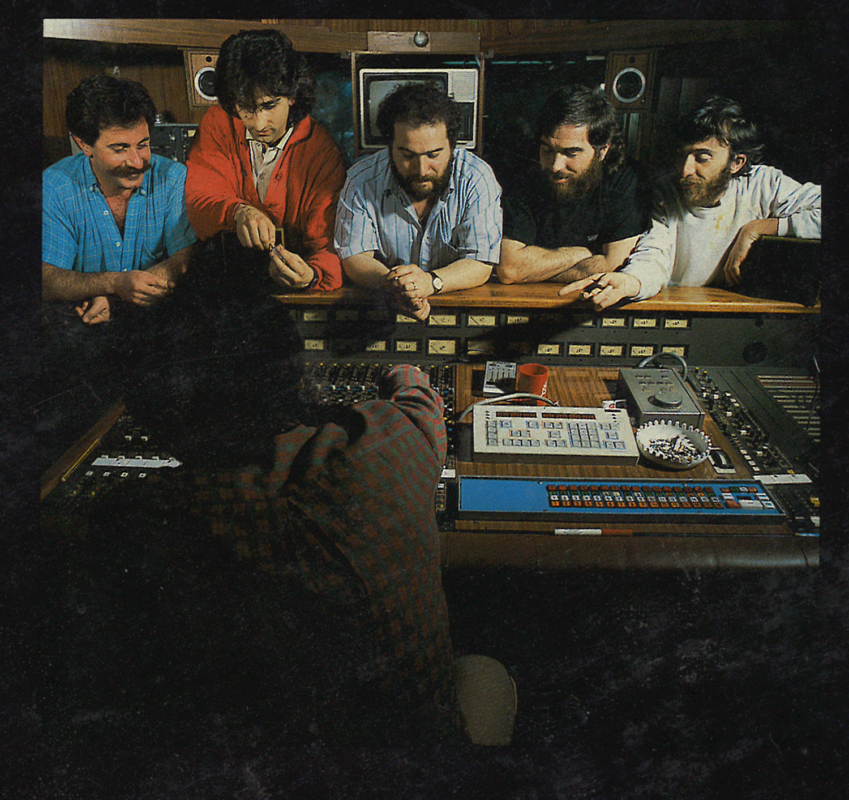Restoring the MCI JH-636 mixer
I think it was April 2016. The phone rang, it was someone I did not know. He told me that someone had told him that I might be interested in a sound table that he had for sale. I answered no, I already had one that I had fixed myself and that my intention was to retire with her … “Ah, well … but it was the Xoxoa studio table, huh? The table where they recorded Mikel Laboa, Ruper Ordorika, Oskorri, Itoiz, and … “
– OK. When could I see it?
At first glance, the table was shattered. It was abandoned with the arrival of the digital era, and spent 30 years off and abandoned, traveling through storage rooms, warehouses, bajeras, being a nuisance everywhere and without anyone appreciating the work that once did. And I thought “if I do not fix it, nobody will fix it and it will go to the junk”, and “with the work he has done, with the music that has passed through his veins …”
And that’s how I fell in love again.
And I welcomed her into my house. After having her a year and a half “at rest”, I started with the repair. It has not been an easy job: an endless work of documentation, a lot of patience, some electronic components that I had to bring from the other side of the globe, stumble and get up, hours stolen to sleep to finish that which obsessed me … but love is love.
Let's do it!
The first job was to repair the power supplies. I speak in the plural because the table has two, one for the audio circuits and the other for lighting and automation.
The feeders have signs of having passed some flood, because of the mud accumulated in the lower part … but of course, first of all I wanted to test them as they were, of course without connecting them to the table. “See what happens”. And it happened that, as expected, began to draw smoke: dry capacitors, burned resistors, exhausted stabilizers, … Well to work! Disassemble everything, general cleaning and localization of defective components, replacement of all semiconductors and filter capacitors, checking and tuning … A long month of work, which is rewarded when you test the feeders and they work. The first step!
When I thought “if I start the master module I will listen to this table”, I confess that I was thrilled. It would be the first step to resuscitate this 1980 table! But for this, I have to change all the coupling capacitors of this module, because it can be taken for granted that, after so long they will be dry. And here’s the next surprise: these capacitors are bipolar. I have never seen this on other sound circuits, on any table or on any other device. Looking for information, I realize that they have less distortion than polarized ones. All right! That speaks to the quality of this table.
To get these capacitors I had to “go to China” for purchases, since that is where the highest percentage of electronic components is manufactured. I have not found it difficult to find these components on the network, with some patience, of course … I ask for them and I wait a month. Meanwhile, I have somewhere to spend time. For example, investigating the automation system, improving the support of the table (it has the wheels destroyed), analyzing the modules …
A short history
Once I got involved in documentation work, I wanted to work on the historical section of this table, in addition to the technician. That is, the merits and adventures of this table. And this is how I found out that this table was made by order of Jaime Yarritu of the record company Xoxoa; a table prepared for 36 modules, but brought from the beginning with 20. It was June or July 1980.
This sound table was in the hands of Jean Phocas from the beginning. He was the sound engineer of Xoxoa since its inception. And the table began to work from the moment it was brought, because in 1980 many records were already recorded. One of the first works was Ruper Ordorika’s first album “Hautsi da anphora”. Also they are of 1980 the second LP of Itoiz, “Ezekiel”; “Plazarik plaza” of Oskorri; “Lau-bost” by Mikel Laboa, “Zaldi Erratu Hatsa” by Iñaki Eizmendi, “Katebegiak” by the Enbor group, “Asfaltuko lorea” by Akelarre and “Otsoa dantzan” by Izukaitz.

